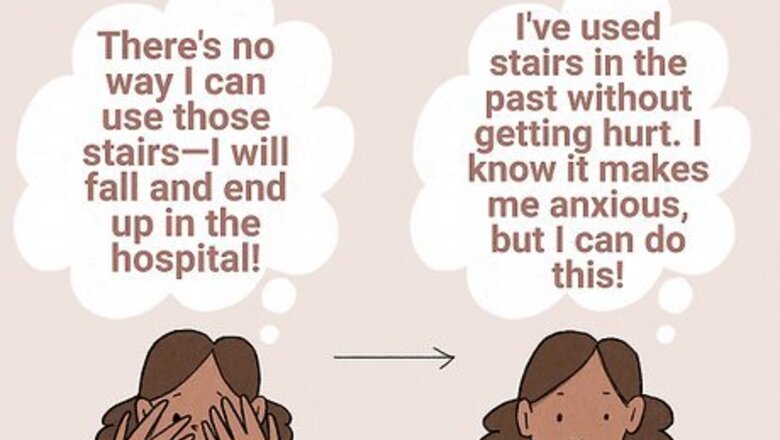
views
Turn a negative thought into a positive coping statement.
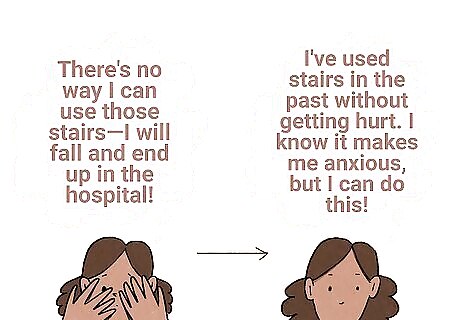
Stop the fear of stairs from controlling you. When you see or think about stairs you may automatically think something bad is going to happen. As soon as you notice yourself doing this, stop your thought and ask yourself if the thought is helpful to you. For instance, stop yourself if you think, "There's no way I can use those stairs—I will fall and end up in the hospital." Then, tell yourself, "I've used stairs in the past without getting hurt. I know it makes me anxious, but I can do this." Don't try to ignore your fear—that will just make it worse. Instead, acknowledge that you're having those feelings, then work on letting go of the struggle.
Visualize yourself using the stairs.
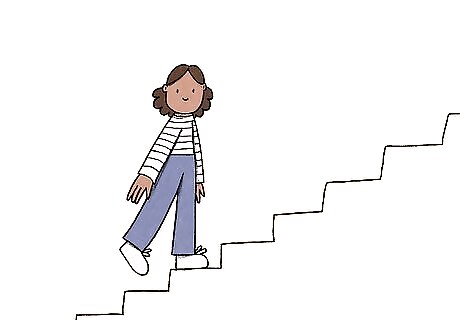
Close your eyes and picture yourself going up or down them. Imagine yourself reaching the top or bottom of the stairs successfully. Then, open your eyes and remind yourself that you won't get hurt. You can do this! Try to be as detailed as possible when you visualize using the stairs. This can help you feel more confident about doing them.
Take the steps slowly.
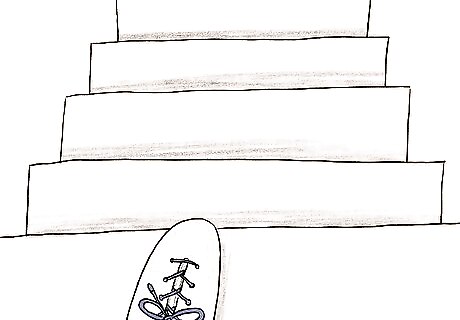
Go slow and focus on one step at a time. Watch where you're placing each foot and set them down intentionally. Remember to grip the handrail as you go so you can look down and focus on your feet. Research shows that pausing before using the stairs can improve stair safety, especially for the elderly. You'll get into a groove as you use the stairs. If it helps you find a rhythm, say, "step," or count each time you take a step.
Practice calming strategies.
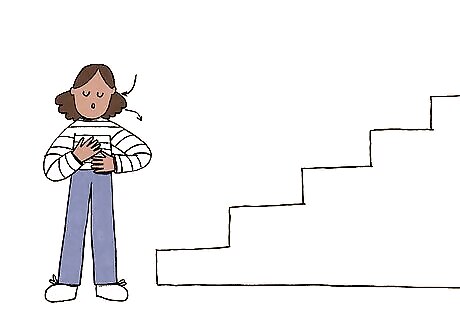
Take deep breaths or practice mindfulness to reduce your stair anxiety. When you're approaching stairs, you may notice your heart rate increases and you feel nervous. To steady yourself before you go up or down the stairs, pause and take a deep breath in through your nose. Then, breathe out slowly through your mouth. You can also try to relax and focus on details around you. Mindfulness and breathing are forms of meditation, which can help you slow your heartbeat and relax as you face your fear. Try to stay connected to the present moment—don't get caught up in thinking about things that have happened in the past or could happen in the future.
Try exposure therapy to build your confidence.

Practice confronting your fear so that over time you don't fear stairs. Instead of avoiding stairs, make a point of using them. It can help to start small—tell yourself to go up or down a small staircase with just a few steps. Next time, go up a slightly larger staircase, and so on until you're confident going up and down the stairs. This approach helps you desensitize your fear over time. If you want to try a faster exposure therapy technique called flooding, face a big staircase instead of gradually working up to it.
Cover the stairs with treads and add handrails.
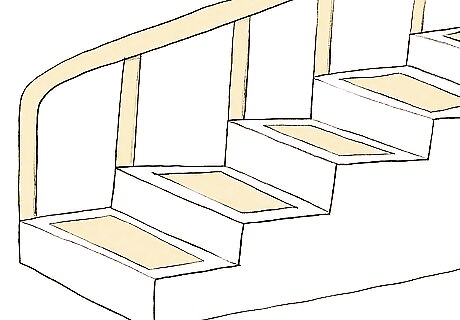
Reduce your falling risk with sturdy handrails and stair treads. If you're afraid of stairs that don't have handrails, install your own. The handrails can help you balance as you go up and down so you're less likely to fall. If your stairs are slippery, install rubber or non-slip stair treads to give you traction. If you're afraid of stairs that you can't modify, wear sensible shoes with good traction that are less likely to slip. If you're installing your own handrails, ensure that they are at elbow height and that they extend past the first and last steps.
Ask a friend to help you use the stairs.
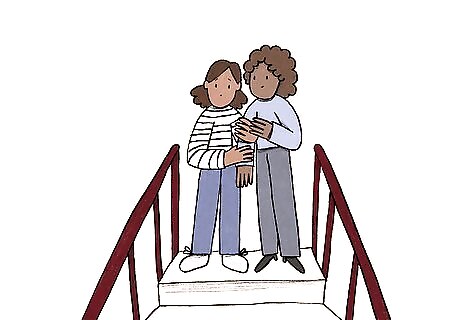
Take your friend's arm as you use the stairs so you feel supported. If you're afraid of falling or tripping, a little reassurance can really help. Hold a friend or family member's hand or grasp their arm as you face your fear. With some practice, you should be able to use the stairs on your own. Don't hide your fear of the stairs from friends or family! Your loved ones should be supportive and they're probably eager to help you.
Do cognitive-behavioral therapy (CBT).
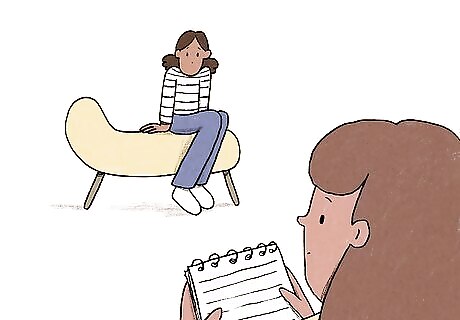
Work with a therapist to replace your fearful thoughts with rational ones. During your therapy sessions, you'll talk about past experiences, how you feel about stairs, and what thoughts go through your mind when you encounter them. Your therapist will ask you questions that challenge these beliefs so you can master your fear. For instance, you might say, "I fell down the stairs and hurt myself really badly when I was a kid. I just know I'm going to fall as soon as I try to use the stairs." The therapist may remind you that people use stairs all the time without injuring themselves. Most cognitive behavioral therapy programs last for 5 to 20 sessions. You might do CBT one-on-one with your therapist or you'll be part of a group with similar fears.
Ask your doctor about anti-anxiety medications.

Beta-blockers or antidepressants can alleviate anxiety and panic symptoms. Talk with your doctor or psychiatrist about whether or not you'd benefit from taking medication while you're doing psychotherapy like CBT or exposure therapy. You'll usually only take these during initial treatment so you feel more comfortable. Beta-blockers can be useful since they decrease elevated heart rate and blood pressure. Your doctor or psychiatrist might prescribe antidepressants if you have severe anxiety that you're working through.
Build strength with a physiotherapist.

A personalized plan can help if you have a medical condition. For instance, if you're healing from a torn ligament or hip surgery, your fear of stairs may be based on what you think your physical limitations are. Working with a physiotherapist can help you recover and become confident when you navigate the stairs. Research shows that patients who have elevated fear-avoidance benefit from fear-avoidance-based physical therapy.


















Comments
0 comment